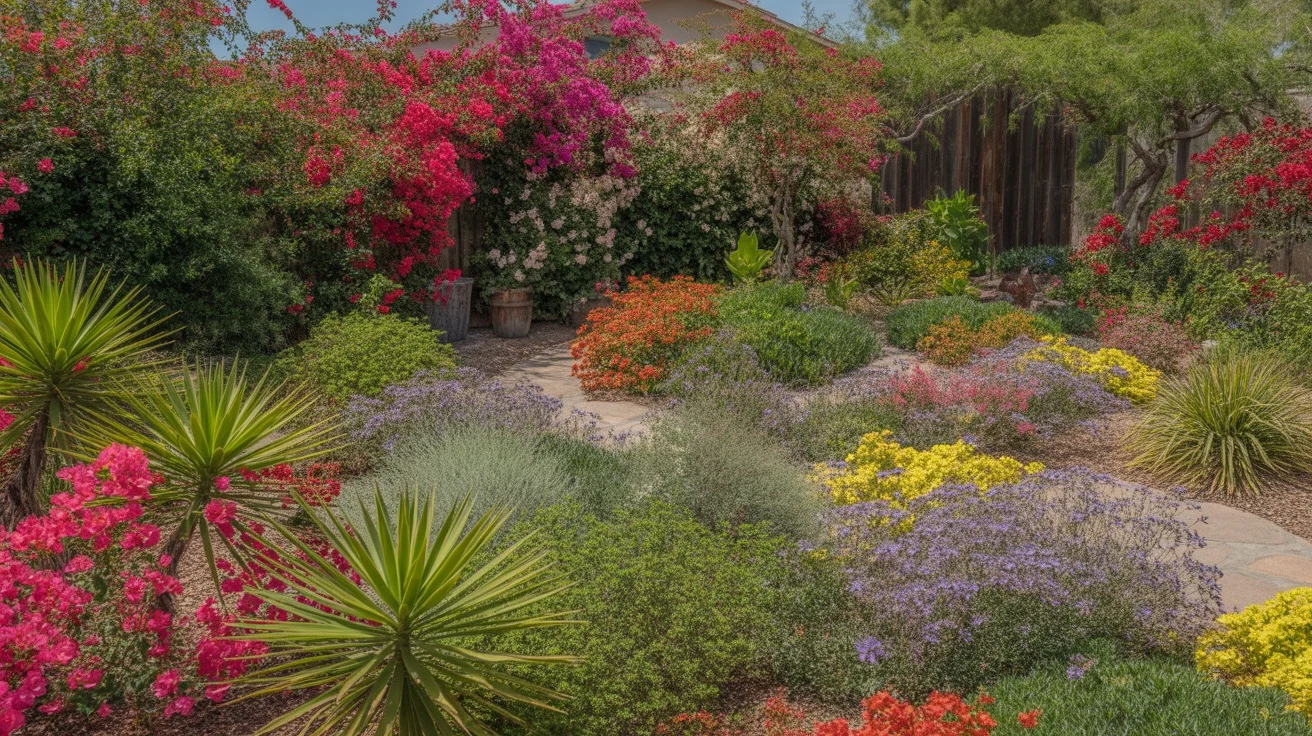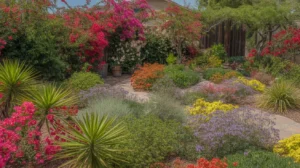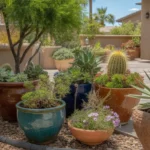As spring arrives in Mesa, gardens burst into life with vibrant blooms and fresh growth. But for many, this season of renewal also brings an unwelcome guest: pollen. If you suffer from seasonal allergies, the thought of tending to your yard may fill you with dread. Fortunately, with a few simple adjustments to your garden rituals, you can reduce pollen levels and enjoy the beauty of spring without the sniffles.

Choose Low-Pollen Plants
One of the most effective ways to control pollen in your Mesa garden is to select plants that produce less of it. Many colorful options exist that won’t aggravate allergies. Consider adding these low-pollen beauties to your landscape:
- Cacti and succulents like prickly pear, agave, and yucca
- Brightly-hued bougainvillea vines
- Showy desert marigolds and penstemons
- Fragrant herbs such as rosemary, thyme, and basil
By incorporating more allergy-friendly species, you can create a stunning spring garden that’s gentler on the sinuses. As one Mesa horticulturist notes, “Even severe allergy sufferers can find many options to enjoy. Focus on plants with large, showy blooms – they tend to be pollinated by insects rather than wind.”
When planning your low-pollen oasis, also aim for variety. Diversifying your plant palette reduces the overall pollen load. Intersperse leafy groundcovers and ornamental grasses amid the flowering perennials for balance.
Eliminate Problem Plants
While bringing in allergy-friendly plants, it’s equally important to remove high-pollen offenders. Mesquite, mulberry, and olive trees are common culprits in Mesa yards. Though they provide welcome shade, their pollen production can be prolific.
If removing mature trees isn’t feasible, consider replacing them gradually. Plant a low-pollen tree nearby, and once it’s established, take out the allergenic one. Some great substitutes include:
- Desert willow with its orchid-like blooms
- Shoestring acacia and its wispy foliage
- Thornless palo verde for a blast of golden spring color
Other pollen-heavy plants to avoid or minimize include Bermuda grass, ragweed, and tumbleweed. Pull them out by the roots when you spot them. Over time, you can create a more sneeze-free slice of paradise.
Time Your Gardening
No matter how allergy-friendly your plant selection, almost all plants produce some pollen. In Mesa, pollen counts tend to be highest from February through June, peaking in March and April. Working in the garden when levels are high can stir up irritants.
To reduce exposure, schedule yardwork strategically. Pollen release is often highest in the morning, so save weeding and pruning for later in the day. Windy, dry conditions also spread pollen, so wait for calm weather if you can.
If you must garden when pollen is swirling, take precautions. Wear gloves, a hat, sunglasses, and a mask to limit contact. Avoid touching your face, and shower and change clothes immediately after.
Maintain Mulch and Groundcover
Bare soil not only looks unsightly, it also invites pollen-producing weeds to take hold. Keeping the ground covered is key to controlling allergies in your Mesa garden. Apply a 3-inch layer of organic mulch around trees, shrubs, and perennials. The mulch smothers weed seeds while retaining moisture and moderating soil temperature.
For open areas, opt for low-pollen or non-flowering groundcovers. Good options for Mesa include:
- Trailing rosemary
- Dymondia silver carpet
- Myoporum parvifolium
- Verbena peruviana
These living mulches form dense mats that outcompete weeds. As a bonus, they add varying textures and hues to the landscape. By covering more ground with mindful plant choices, you’ll breathe easier all season.
Clean Up Regularly
Sweeping away pollen on hard surfaces and deadheading spent flowers goes a long way toward lowering levels in your yard. Make it a weekly ritual to hose down patios, paths, and driveways. This quick chore washes away pollen before it can become airborne again.
Similarly, remove faded blooms from plants to prevent pollen-heavy seedheads from forming. Clip off dead flower stalks and add them to your compost pile or sealed trash bag. Avoid letting them lay around the garden.
Other general tidiness tips include keeping the lawn mowed, raking up leaves, and putting garden debris in closed bins. A little regular maintenance means less pollen lying in wait.
Filter Your Indoor Air
Even with an allergy-aware landscape, some outdoor pollen will inevitably make its way inside your Mesa home. Houseplants can serve as natural air filters to trap irritants. Good options include:
- Boston fern
- Spider plant
- Peace lily
- Bamboo palm
These green allies not only add beauty, but they can reduce indoor air pollutants. According to NASA research, houseplants remove up to 87% of toxins within 24 hours. Place one plant per 100 square feet for the best filtering effect.
In addition to leafy helpers, consider upgrading your HVAC system’s filter to a high-efficiency model. HEPA filters with MERV ratings of 17-20 capture even microscopic particles. Vacuum carpets and upholstery frequently with a machine equipped with a HEPA filter as well.
By layering smart gardening practices outdoors with proactive cleaning inside, you can finally stop and smell the roses without a sneeze. With a little planning and effort, Mesa residents can keep spring pollen at bay and enjoy all the season has to offer.











